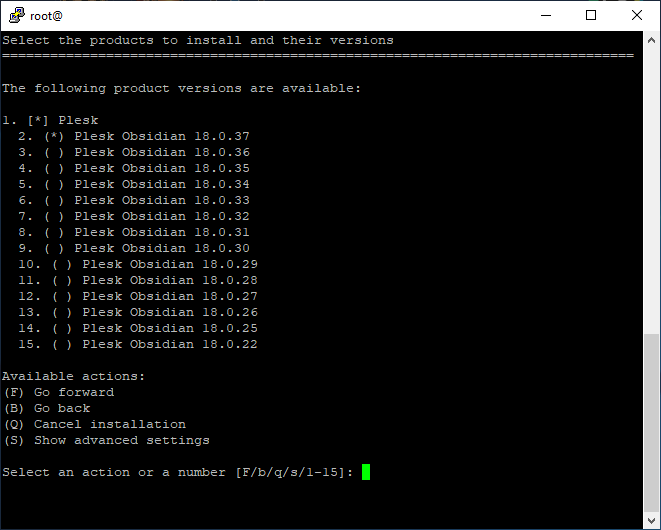If you want to select specific Plesk components for installation, you
can install Plesk using the interactive console. Follow these steps to
begin:
-
Obtain the installer script
Download the installer script:
# wget https://autoinstall.plesk.com/plesk-installerEnable execution mode for the downloaded installer script:
# chmod +x ./plesk-installer -
(Optional) During installation, Plesk configures
firewalld, at which time runtime firewalld
rules
are lost. To preserve the currently configured firewalld runtime
rules, execute the following command:# env PLESK_INSTALLER_SKIP_FIREWALLD=1
However, in this case, you must manually open the ports required for
Plesk to
operate.
You can do it via firewalld or the Plesk Firewall extension. -
(Optional) When you install Plesk on a server
with 512 MB of RAM or less, a 1 GB swap file is created to improve
Plesk performance. If you do not want Plesk to create this file (for
example, if you have an SSD drive and want to avoid the wear and tear
caused by constant I/O operations), increase the amount of RAM on the
server or run the following command:# env PLESK_SWAP=disable
-
Launch the installer
Run the script to launch the interactive installer for the latest
stable Plesk version in command line:# sh ./plesk-installerIn the course of installation you will be asked a series of
questions. You will be able to choose suitable options as well as go
back to correct already selected options if necessary.
Run the installer script with the
--all-versionsoption to make
all Plesk versions available for installing:# sh ./plesk-installer --all-versions
To learn more about the installation script, run:
# ./plesk-installer --help
When the installation process is complete, follow the few simple steps
to configure Plesk for work as described here: Plesk Single Server
Post-install Configuration.